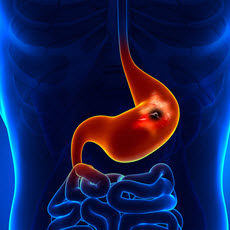Experiencing persistent stomach discomfort raises concerns and questions, potentially pointing towards a stomach ulcer. These lesions, occurring in the stomach lining or duodenum, prompt a burning sensation and demand a careful diagnosis. This article aims to demystify the diagnostic process for stomach ulcers, offering insights and direction for those suspecting this condition.
Schedule your appointment with a gastroenterologist in Brooklyn today for excellent care!

Spotting Stomach Ulcer Symptoms
While several conditions can mimic the symptoms of a stomach ulcer, certain signs are more directly associated:
- Persistent upper abdominal pain: Typically, this discomfort wanes with eating or antacid use.
- Digestive disturbances: Including bloating, heartburn, or regurgitation.
- Appetite changes: Ulcers can reduce appetite, leading to weight loss.
- Nausea: Especially prevalent in the morning or on an empty stomach.
Initial Steps: Understanding Your Symptoms
Begin by consulting a healthcare provider. They’ll delve into your:
- Medical background: Chronic illnesses, medication history, and previous diagnoses.
- Symptom specifics: Detail the onset, location, and patterns of your discomfort.
- Lifestyle habits: Dietary patterns, tobacco, and alcohol use can influence ulcer development.
Advancing to Diagnostic Procedures
To confirm a stomach ulcer, doctors may recommend:
- Upper endoscopy: Directly observes the stomach’s interior, identifying ulcers and permitting tissue sampling.
- Barium swallow: A contrast X-ray that outlines your digestive tract, highlighting irregularities.
- H. pylori tests: Breath or stool tests identify this ulcer-causing bacterium.
- Blood screening: While not specifically for ulcers, it can detect related conditions like anemia.
Risk Factors Highlighted
Understanding what elevates ulcer risk is vital:
- H. pylori presence: This bacterium is a primary ulcer catalyst.
- Regular NSAID usage: These common pain relievers can erode the stomach lining.
- Lifestyle choices: Smoking and heavy alcohol use exacerbate ulcer risks.
- Stress factors: Chronic stress can exacerbate underlying ulcer issues.
Post-Diagnosis: Crafting an Effective Treatment Plan
Post-diagnosis, treatment strategies may encompass:
- Acid reduction: Utilizing medications like PPIs to foster ulcer healing.
- Eradicating H. pylori: If present, a course of antibiotics is standard.
- Lifestyle adjustments: Recommendations may include dietary changes, smoking cessation, and moderated alcohol consumption.
Selecting the Right Healthcare Provider
Choosing a qualified healthcare provider is crucial. Seek a professional experienced in gastroenterology, with a history of successfully managing and diagnosing stomach ulcers. Also, consider the provider’s communication style and patient feedback to ensure a comfortable and productive healthcare experience.
Maximizing Your Diagnostic Visit
Prepare for your consultation by:
- Compiling medical records: Share your comprehensive health history with your doctor.
- Listing all symptoms and questions: Ensure a thorough discussion and avoid overlooking critical information.
- Engaging actively in the consultation: Honest communication about symptoms and lifestyle is key to accurate diagnosis and effective treatment.
Forming a Long-term Healthcare Relationship
Securing a diagnosis is just the beginning. Forge a continuous relationship with your healthcare provider, adhere to treatment plans, and maintain regular follow-ups to manage your condition effectively.
By comprehensively understanding stomach ulcers and the diagnostic process, you can approach your healthcare journey with confidence. Remember, proactive steps, informed decisions, and collaborative healthcare relationships are essential in managing and overcoming stomach ulcers.
